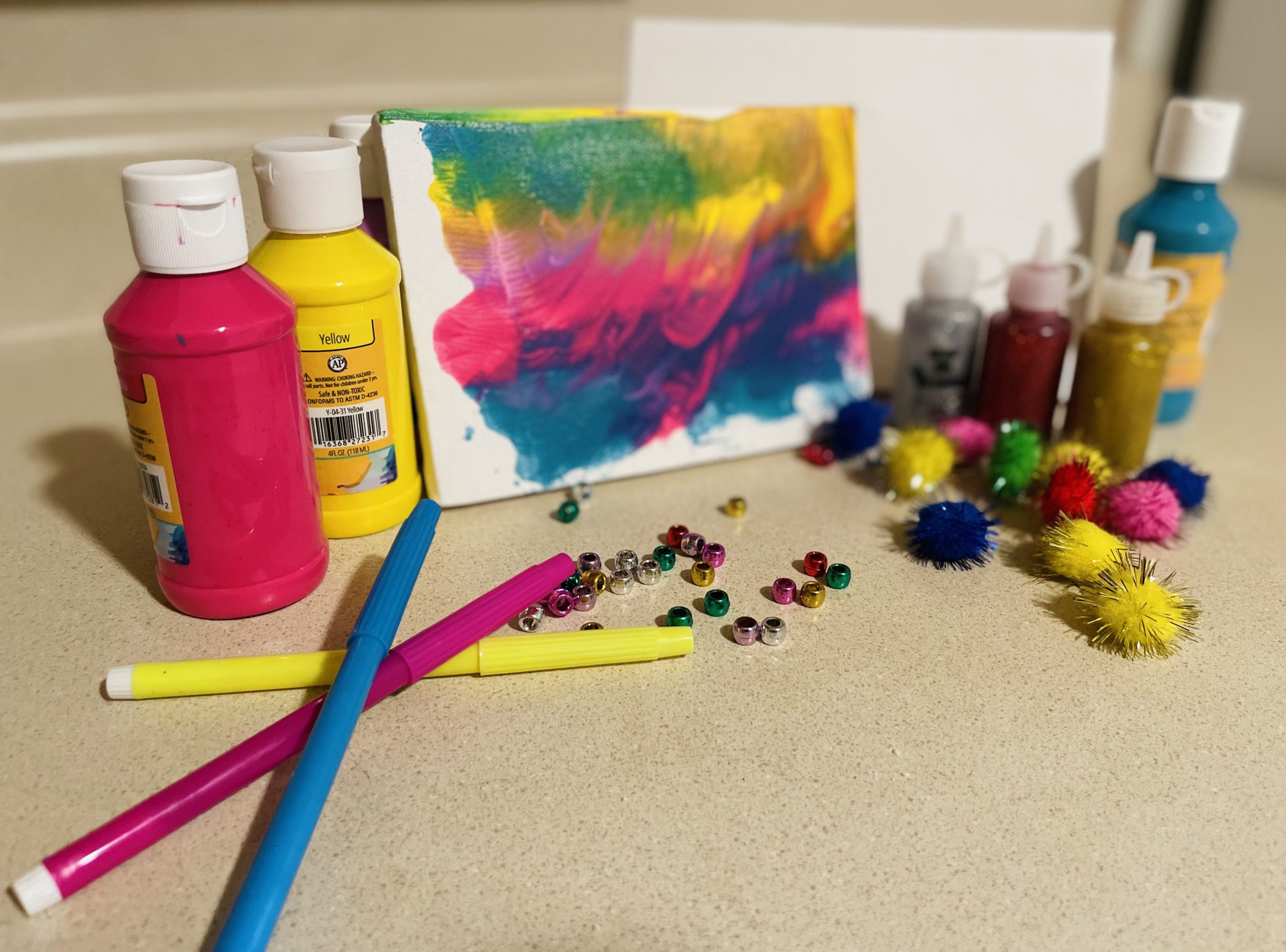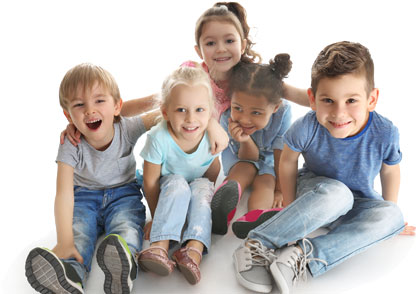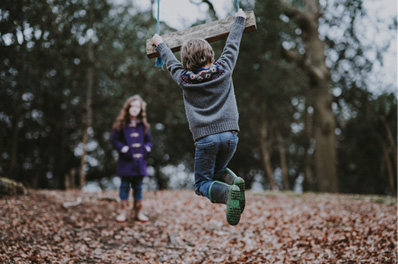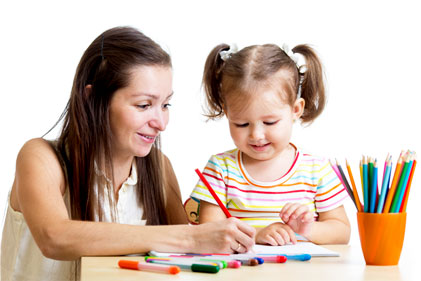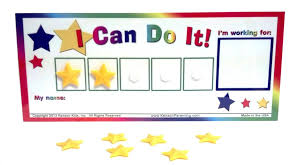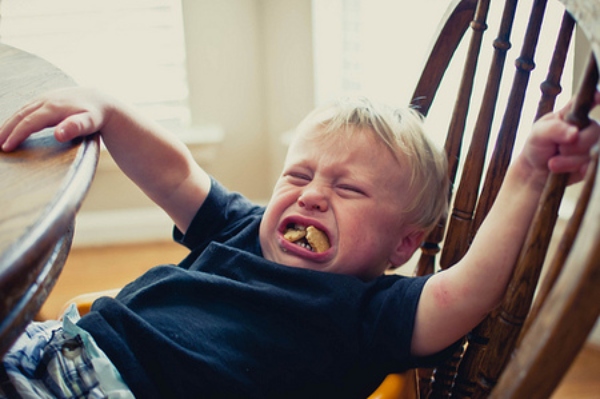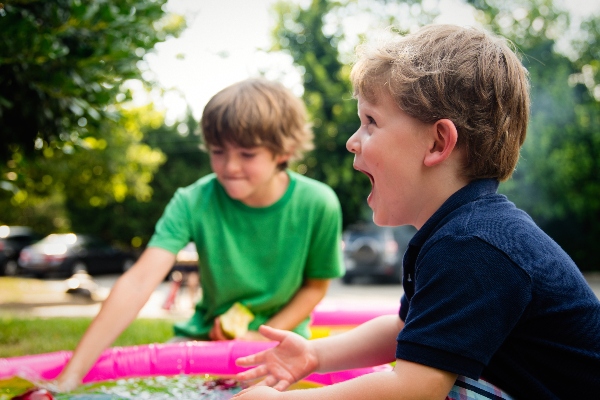Since the start of the now year-long pandemic, parents have been tasked with a challenging feat: not only coming up with different ways to keep their children entertained, but doing so from the safety of their own homes. Coming up with fun and creative activities can certainly bring about some unwanted mess. For all parents out there that are looking for mess-free activities, this blog post is for you!
Finger Painting With a Twist
Materials:
- Large Ziploc or freezer bag
- Canvas or cardboard (or paper)
- Paint
 This activity is a great mess-free option! It requires only a few materials and the possibilities of what can be created and taught are endless. Any materials that you don’t already have can be found at the dollar store, including canvases! Children should start by selecting the paint colors they want to use for their masterpiece and putting the paint on their canvas. This activity can also be done with paper but results may vary. If using paper, it is best to use less paint so the paper doesn’t get oversaturated and tear.
This activity is a great mess-free option! It requires only a few materials and the possibilities of what can be created and taught are endless. Any materials that you don’t already have can be found at the dollar store, including canvases! Children should start by selecting the paint colors they want to use for their masterpiece and putting the paint on their canvas. This activity can also be done with paper but results may vary. If using paper, it is best to use less paint so the paper doesn’t get oversaturated and tear.
For the best results, try putting the different paint colors on different areas of the canvas. Then they should carefully place the canvas inside of the Ziploc bag and secure it tightly closed. Next is the fun part! Children can practice tracing letters and numbers, drawing shapes, or just maneuvering the paint around. This is a great opportunity for them to practice using their index finger. Once they are done painting, carefully remove the canvas from the bag and set it somewhere safe to dry. Then, you can repeat the activity with different colors, reuse the same bag, or dispose of the bags for a super easy cleanup!
Homemade Sensory Bags
Materials:
- Ziploc bags
- Duct tape
- Water or play dough
- Pompoms, plastic beads, small figurines, glitter, food coloring, paint, etc. (Can be made to fit your child’s specific preferences, so these materials may vary)
 Sensory bags can be made in a lot of different ways, which is what makes this activity a great option for many children. Do you want to make a water sensory bag? Add some water, stickers, and/or glitter to a Ziploc bag and duct tape the bag shut. Then, place the bag into another Ziploc bag and reinforce it with more duct tape after removing any excess air from the bag. Do you want to make a play dough sensory bag? Pick the play dough color of choice and flatten it. Then, put it in a Ziploc bag and add pompoms, plastic beads, or any other small, non-sharp objects in the bag. Next, duct tape the bag shut to reinforce it closed. How about a slime sensory bag? This one requires a few more materials such as 1 cup of cornstarch, 1/3 cups of sugar, and 4 cups of cold water. Mix all three ingredients in a pot over medium heat until the mix thickens and becomes clear. Then, you can add food coloring and glitter if you choose.
Sensory bags can be made in a lot of different ways, which is what makes this activity a great option for many children. Do you want to make a water sensory bag? Add some water, stickers, and/or glitter to a Ziploc bag and duct tape the bag shut. Then, place the bag into another Ziploc bag and reinforce it with more duct tape after removing any excess air from the bag. Do you want to make a play dough sensory bag? Pick the play dough color of choice and flatten it. Then, put it in a Ziploc bag and add pompoms, plastic beads, or any other small, non-sharp objects in the bag. Next, duct tape the bag shut to reinforce it closed. How about a slime sensory bag? This one requires a few more materials such as 1 cup of cornstarch, 1/3 cups of sugar, and 4 cups of cold water. Mix all three ingredients in a pot over medium heat until the mix thickens and becomes clear. Then, you can add food coloring and glitter if you choose.
Whichever type of sensory bag your child chooses to make, encourage creativity and individuality. Their sensory bag should be a representation of the things they like such as their favorite color(s), which items they choose to use, etc. And most importantly, have fun!
Splatter Painting in a Jar
Materials:
- Clean, empty jar with a lid
- Paper
- Paint
- Uncooked, dried beans or plastic beads
 Do you have an old Tupperware container or peanut butter jar somewhere in your pantry? Great, then you’re ready to get started! Start by making sure your piece of paper fits around the inside of the container or jar. Then, children should select which paint colors they want to use for this project and carefully add the paint to the bottom of the jar. Then, they should add enough beans or beads to the jar to cover the bottom. Next, tightly secure the lid closed and get ready for the fun to begin! Children can shake the jar as much or as little as they want and listen to the sounds the beans or beads make as they move around the inside of the jar. As they are moving around the jar they are splattering the paint along the paper. Children can move the jar in different ways to predict the kind of patterns the beans and beads will produce. Once they are done, carefully remove the piece of paper and allow it to dry. Then, you can repeat the activity by trying out different methods or dispose of the container for an easy cleanup job.
Do you have an old Tupperware container or peanut butter jar somewhere in your pantry? Great, then you’re ready to get started! Start by making sure your piece of paper fits around the inside of the container or jar. Then, children should select which paint colors they want to use for this project and carefully add the paint to the bottom of the jar. Then, they should add enough beans or beads to the jar to cover the bottom. Next, tightly secure the lid closed and get ready for the fun to begin! Children can shake the jar as much or as little as they want and listen to the sounds the beans or beads make as they move around the inside of the jar. As they are moving around the jar they are splattering the paint along the paper. Children can move the jar in different ways to predict the kind of patterns the beans and beads will produce. Once they are done, carefully remove the piece of paper and allow it to dry. Then, you can repeat the activity by trying out different methods or dispose of the container for an easy cleanup job.
Mask Decorating
Materials:
- Reusable face mask (preferably white or a light color)
- Non-toxic, washable markers
 Having to wear your mask, although important, can certainly put a damper on family outings like a trip to the park or your favorite store. For some children, wearing a mask may even be an aversive experience. Especially if they do not understand why they are important. One way to make wearing a mask a little more fun is to take the time to decorate them! Children often show pride in their creations and will be more likely to want to “show it off,” and what better way to show it off than wearing it! For this activity, you will only need two materials—a plain light colored reusable mask, and non-toxic washable markers. Once you have your materials, the rest is simple—start decorating! Once they are done decorating, wait for the mask to be completely dry, and then they can show it off! The great part about using washable markers is that each time the mask is washed it becomes a blank canvas again ready to be redecorated. This activity can also be done with shirts, hats, socks, etc. The possibilities are endless!
Having to wear your mask, although important, can certainly put a damper on family outings like a trip to the park or your favorite store. For some children, wearing a mask may even be an aversive experience. Especially if they do not understand why they are important. One way to make wearing a mask a little more fun is to take the time to decorate them! Children often show pride in their creations and will be more likely to want to “show it off,” and what better way to show it off than wearing it! For this activity, you will only need two materials—a plain light colored reusable mask, and non-toxic washable markers. Once you have your materials, the rest is simple—start decorating! Once they are done decorating, wait for the mask to be completely dry, and then they can show it off! The great part about using washable markers is that each time the mask is washed it becomes a blank canvas again ready to be redecorated. This activity can also be done with shirts, hats, socks, etc. The possibilities are endless!
Why Are These Crafts Important?
Aside from being mess-free, which is a big win for parents, these crafts also promote inclusivity. Not all children like, or can tolerate, their hands being wet, sticky, or “dirty.” This can result in many children opting not to participate in such activities. Fortunately, these mess-free activities provide an opportunity for all children to participate by placing a barrier between the paint, water, etc. and their hands. The feeling of squeezing a sensory bag or hearing beads move around a plastic container can also be a soothing form of stimulation for many children. These activities can each satisfy a different type of sensory stimulation. I would recommend trying out the different activities to see which one your child seems the most interested and engaged. If children’s senses are being stimulated in a positive way, they are less likely to engage in maladaptive behaviors to achieve the same form of stimulation. It’s a win-win all around!
Functional skills that these mess-free crafts teach:
Attending
- Ask child to repeat instructions
- Model the steps of the different crafts alongside your child to make sure they are attending to what you are doing before getting started
Fine Motor Skills
- Using their pointer finger to drag the paint across the canvas
- Manipulating the sensory bags in their hands to promote hand strength
- Squeezing the paint bottles also promote hand strength
- Using markers to decorate their masks
- Practice manipulating the markers in the correct form (using pincer grasp rather than wrapping all four fingers around the marker)
Multi-Step Directions
- “Put the paint on the canvas, THEN put the canvas in the bag”
- “Place the piece of paper inside the jar, BEFORE adding the paint and beads”
- These examples test auditory comprehension skills
Expressive Identification
- “What color is this?”
- “What shape is this?”
Receptive Identification
- “Which paint bottle is blue?”
- “Point to the item that is a circle”
To make this more challenging you can make additional statements such as:
- “Pass me the paint bottle that is NOT yellow” – This example teaches critical thinking skills
- “Give me the button that is small AND pink” – This example requires the child to combine concepts
Color Concepts
- “Which paint bottle is the same color as the ocean?”
- “Which colors can you mix to make green?”
- “How can we make this color lighter? Or darker?”
Check out more play based learning with our at home scavenger hunts and DIY fidget toys!
Need a little extra support? Contact us to see what services may be right for you!

